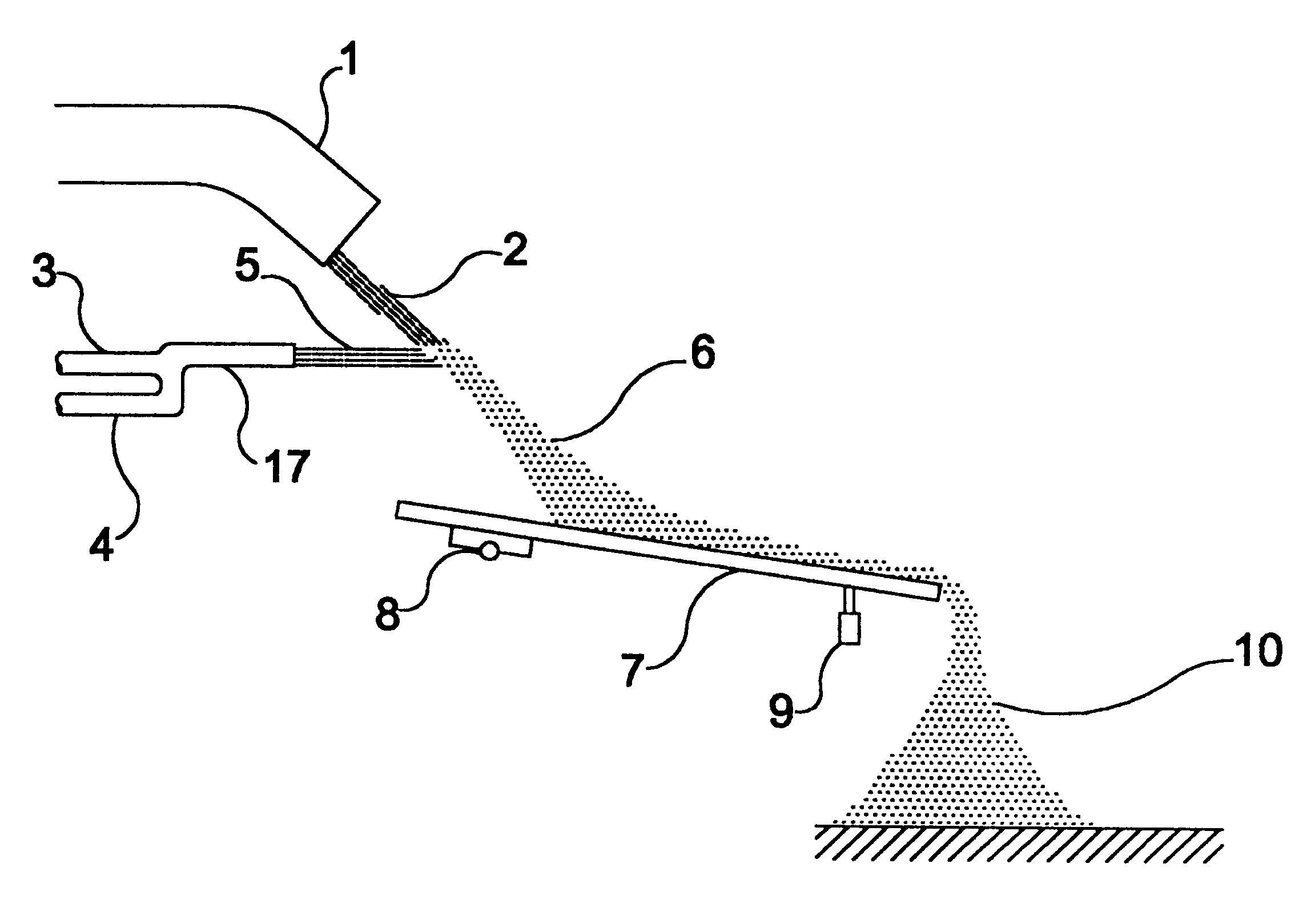Apparatus and process to extract heat and to solidify molten material particles
- Summary
- Abstract
- Description
- Claims
- Application Information
AI Technical Summary
Benefits of technology
Problems solved by technology
Method used
Image
Examples
first embodiment
FIG. 1 depicts an apparatus object of the invention. A downward molten material flow 2 flows by gravity from a launder 1 and is traversed by a high pressure dispersing / cooling flow 5 coming from a dispersing / cooling agent ejector 17.
In the present embodiment the ejector 17 comprises a high pressure gas tube 4, which provides a flow of gas at a high pressure, e.g. air or nitrogen, the tube 4 being interconnected to an ejection water tube 3, which provide a flow of ejection water, therefore a high pressure dispersing / cooling flow 5 is provided at the outlet of the ejector 17.
The high pressure dispersing / cooling flow 5 substantially transversely traverses the downward molten material flow 2, in order to provoke dispersion of the latter in particles of molten or semi-molten material 6, provoking said particles 6 to cool-off at the same time.
The dispersed particles 6 of molten or semi-molten material next impinge onto a transporting device 7 which carry them to their collecting area. Som...
second embodiment
FIG. 3 depicts an apparatus to extract heat and to solidify molten material particles according to the present invention. This embodiment basically comprises the some parts previously described with regard to FIGS. 1 and 2, and for the sake of simplification it will not be described here again how occurs the dispersion of the molten material flow 2 into particles of molten or semi-molten material 6, as in this embodiment such dispersion occurs in the same way as previously described.
It should be pointed out that although the low pressure gas duct 11 is used in this embodiment and intended to provide a low pressure dispersing / cooling flow 12, said low pressure gas duct 11 could be omitted, depending on the features of the molten material flow which is to be dispersed into particles 6.
The apparatus shown in FIG. 3 differs from the previously shown apparatuses in comprising the use of a hopper 15, which serves to collect the dispersed particles 6, carrying them onto the transporting de...
PUM
| Property | Measurement | Unit |
|---|---|---|
| Pressure | aaaaa | aaaaa |
| Flow rate | aaaaa | aaaaa |
| Heat | aaaaa | aaaaa |
Abstract
Description
Claims
Application Information
 Login to View More
Login to View More - R&D
- Intellectual Property
- Life Sciences
- Materials
- Tech Scout
- Unparalleled Data Quality
- Higher Quality Content
- 60% Fewer Hallucinations
Browse by: Latest US Patents, China's latest patents, Technical Efficacy Thesaurus, Application Domain, Technology Topic, Popular Technical Reports.
© 2025 PatSnap. All rights reserved.Legal|Privacy policy|Modern Slavery Act Transparency Statement|Sitemap|About US| Contact US: help@patsnap.com



